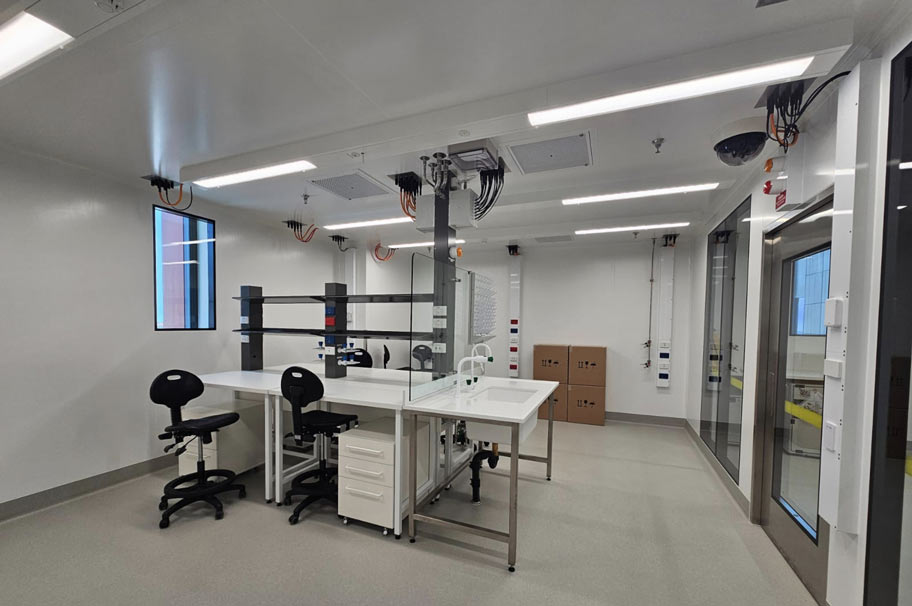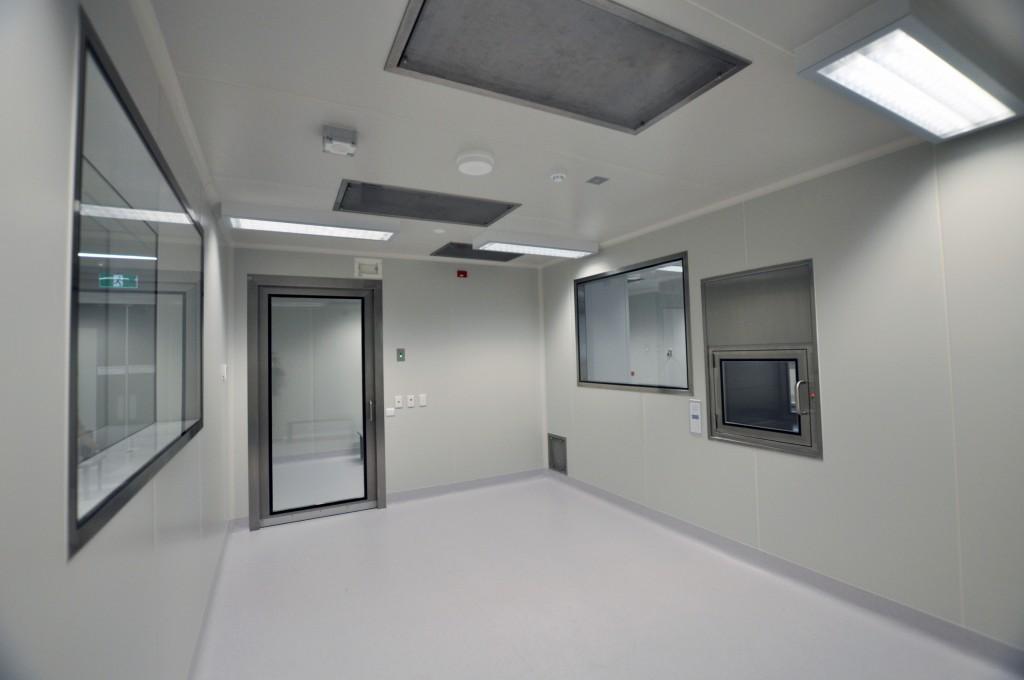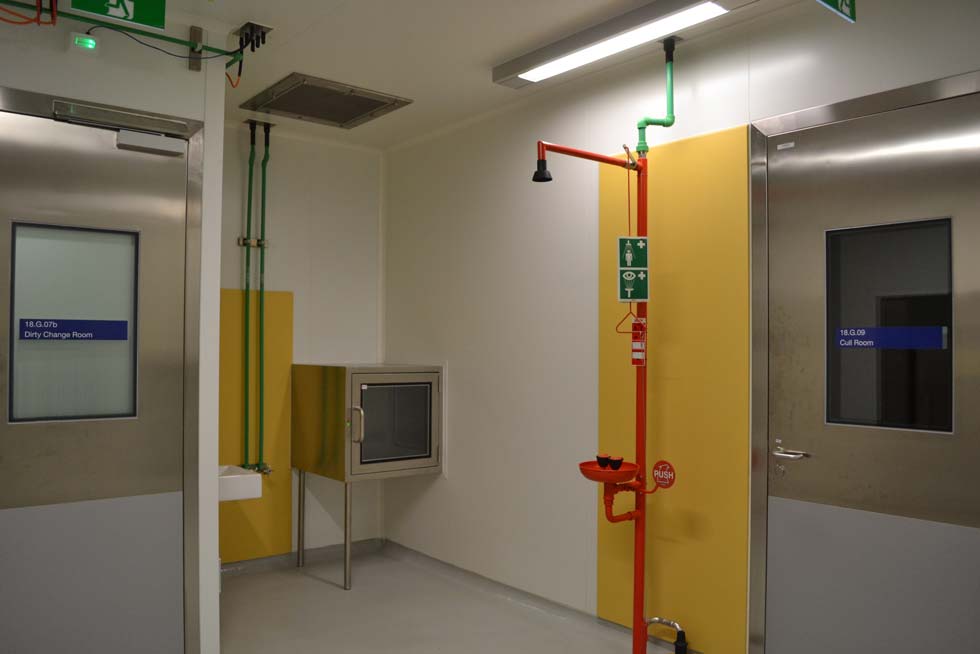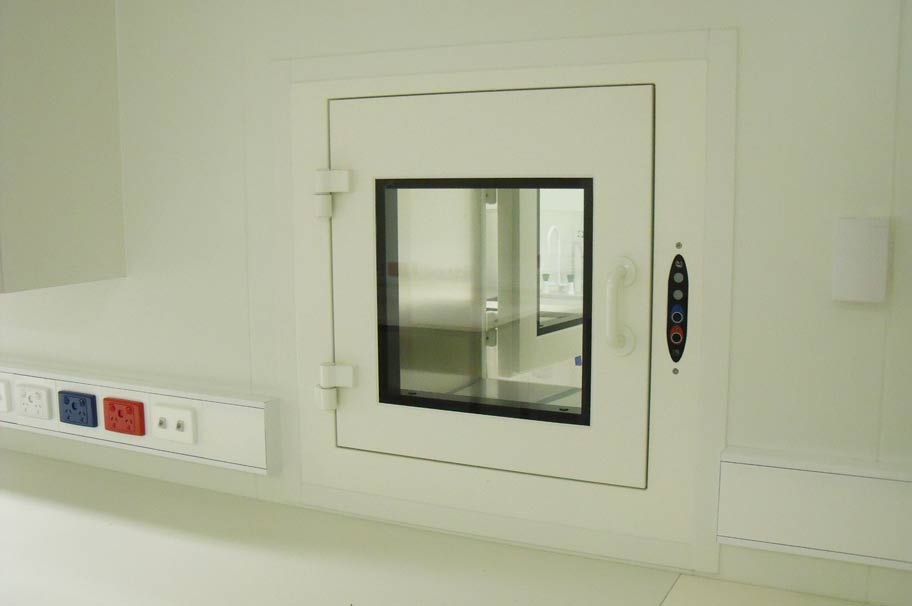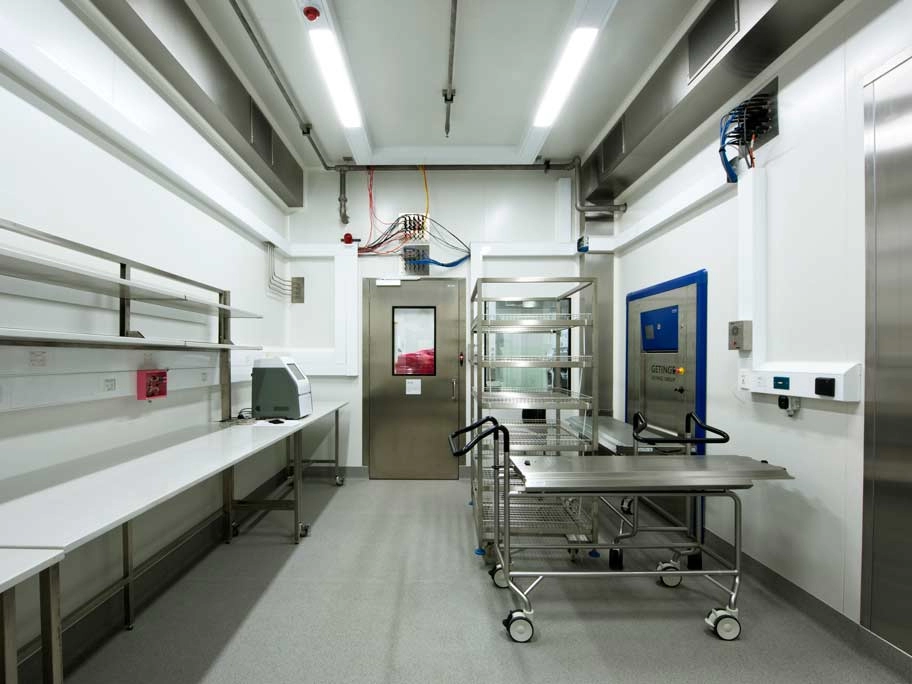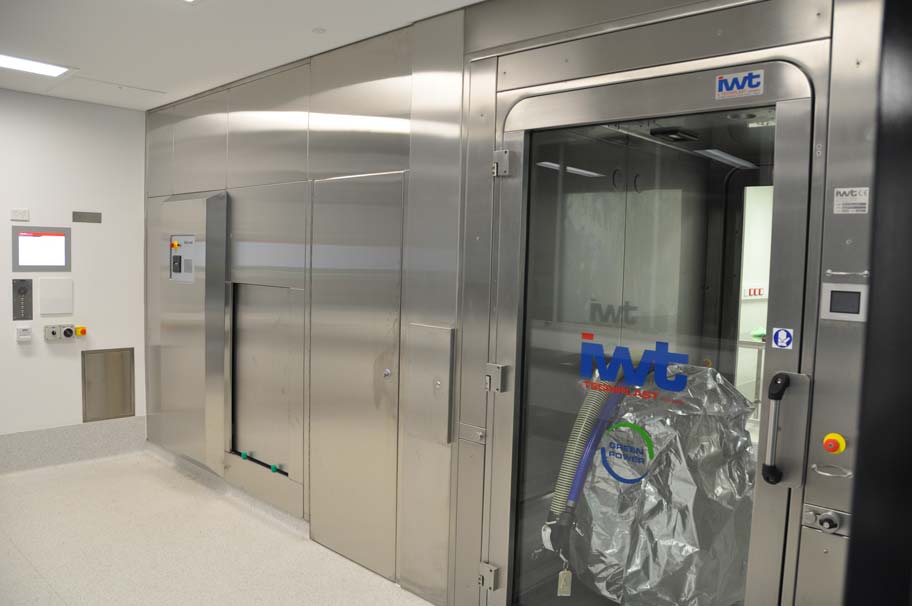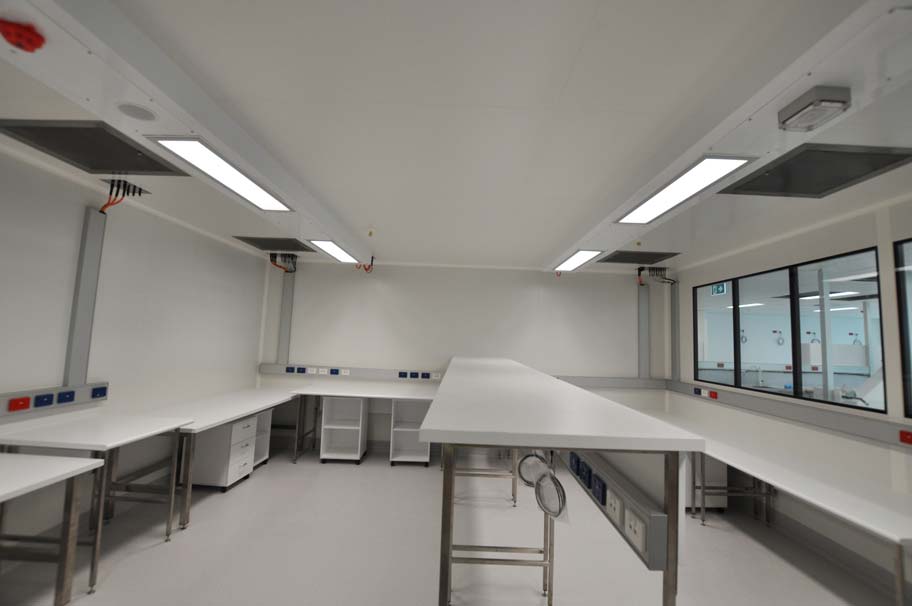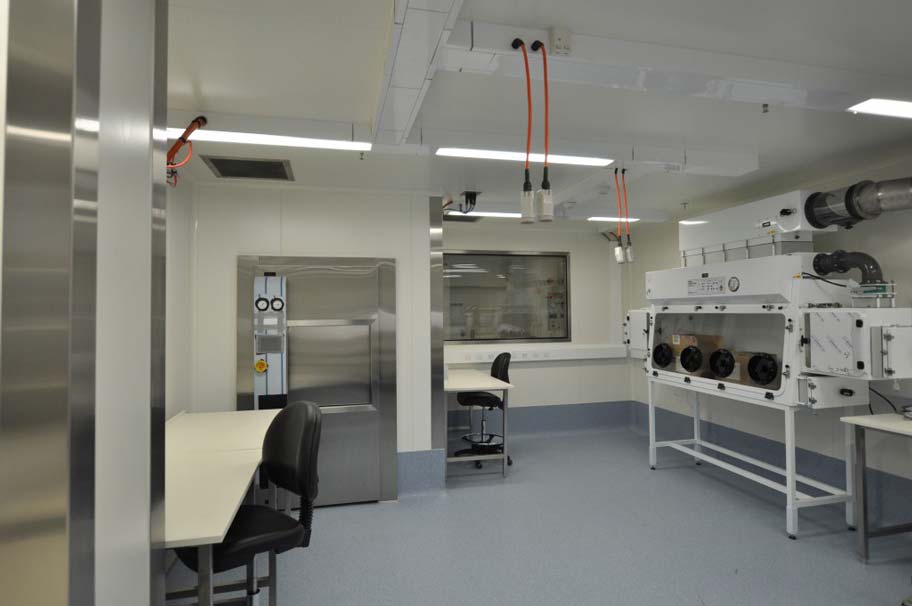Negative pressure facilities all have the purpose of keeping harmful contaminants within the facility. Examples where a negative pressure room may be used is in a hospital Isolation room, pharmacies with cytotoxic labs. Hazardous goods storage or explosive atmospheres, chemical and dry powder rooms, and high containment labs for isolating the spread of airborne viruses such as COVID19.
Physical containment facilities are designed to ensure infectious microorganisms are safely contained inside the laboratory. This protects the surrounding environment and the staff inside the facility from any risk of contamination.
High containment facilities PC3 and PC4 are a high risk to lab staff and facility operators if they are not built correctly. Obviously, the research in a facility of this type can be deadly to humans however the requirements of good airtightness standards with high containment facilities are related to sterilization. The maximum allowable leakage is 120L per minute at 200 pascals pressure.
Total Precision Cleanrooms Aust have built many high containment facilities in Melbourne, Queensland, Perth, Northern Territory and NSW. All these facilities have easily achieved the leakage requirements and standards.
It is not uncommon for a facility of this nature to fail, particularly where the builder and trades have little or no experience with this type of work. TPC often assist other builders, small and large where a major failure occurs due to the inexperience of their contractors and staff. It is imperative that the trades have experience in these areas prior to taking on a job of this nature.
Some of the containment facilities we have designed and/or constructed.
Physical containment levels
Physical Containment Level 1 (PC1)
A PC1 laboratory or facility is suitable for work with microorganisms where the hazard levels are low and where laboratory or facility personnel can be adequately protected by standard laboratory practices.
Physical Containment Level 2 (PC2)
A PC2 laboratory or facility with appropriate infrastructure and practices for research containing materials likely to contain risk group 2 microorganisms. If activities involve materials which are likely to aerosolise or with microorganisms that are transmissible by the respiratory route are performed, then they must be done in a Bio safety cabinet (BSC).
Physical Containment Level 3 (PC3) and Level 4 (PC4)
PC3 and PC4 facilities provide additional building safeguards to minimise the risk of infection or release of appropriate to RG3 and RG4 microorganisms. Put simply if the research conducted in these facilities is deadly to humans or can make you very ill, it is conducted in this type of facility.

